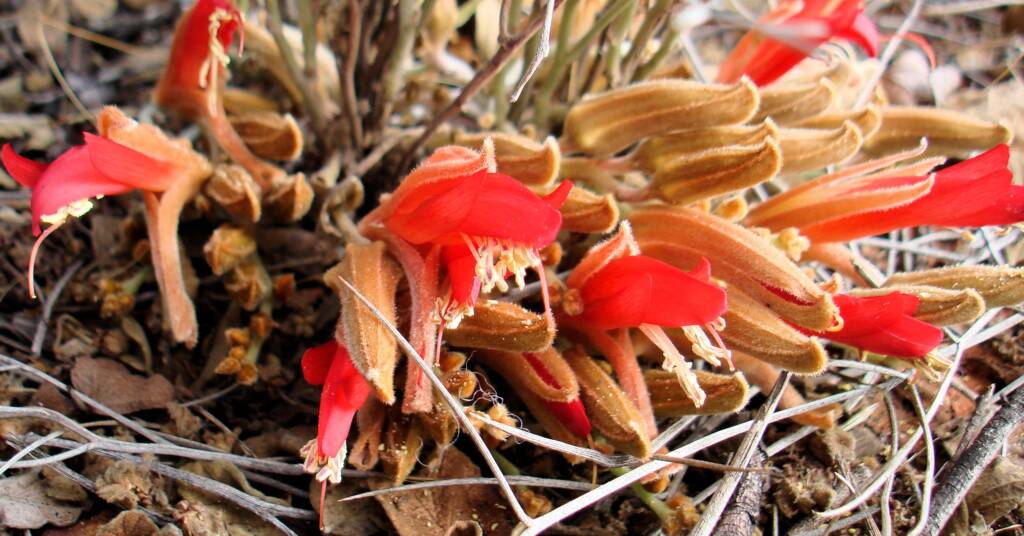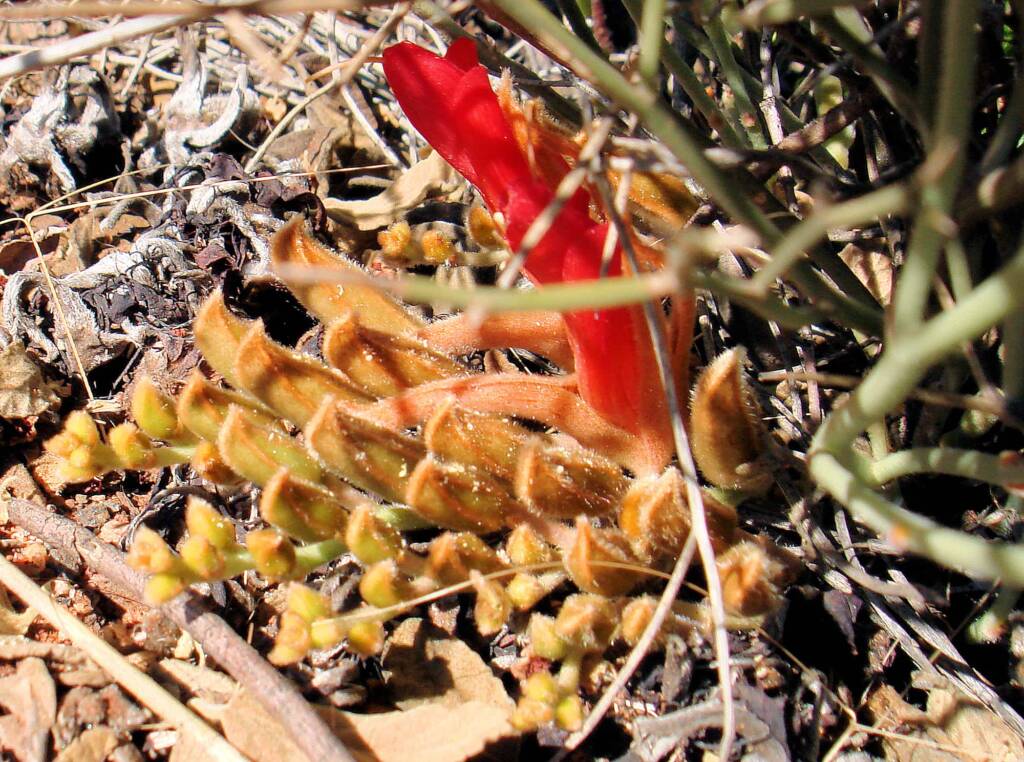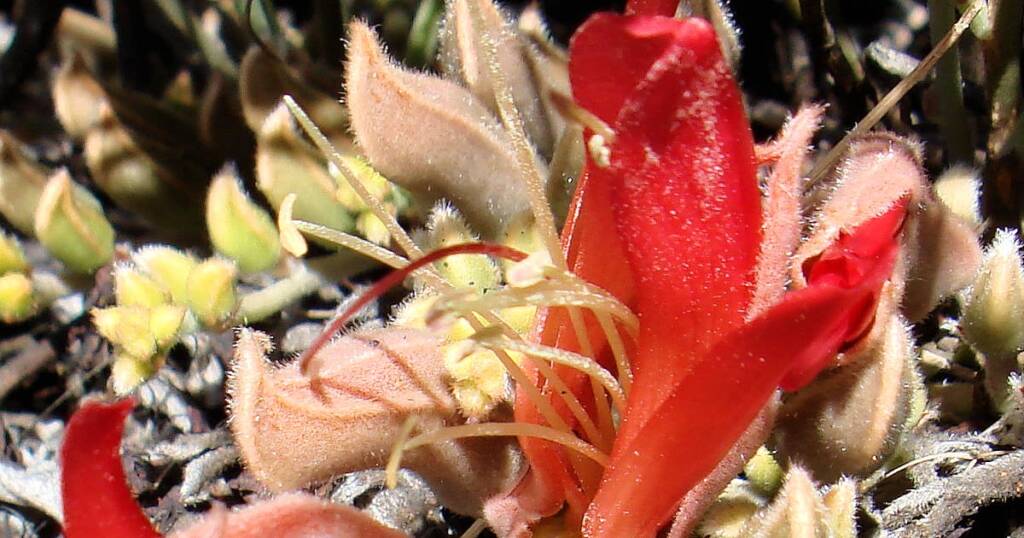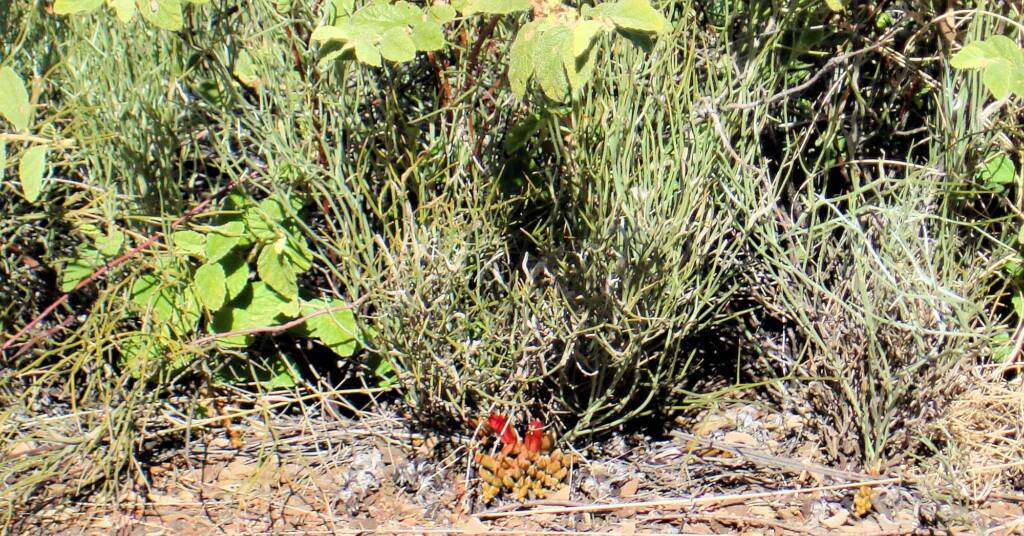Known as the Upside-down Plant (Leptosema chambersii), due to the flowers growing at the base of the plant, is an unusual plant that grows to about 40 cm high with small stiff, upright, intricately branched leafless stems. A rounded looking shrub, it has large red pea shape flowers that are often overlooked, growing from the base of the plant in small clusters.
Flowering usually in the cooler months of the year, the flowers are in spreading raceme axis, red with the largest keel about 35-40 mm long. The calyx is a silky golden brown.
It is found growing in spinifex sand plains, with honey in the flowers being eaten by birds and the local Indigenous people.
Common name:
Upside-down Plant








Leptosema chambersii appears to have two classifications:
- Scientific classification
- Kingdom: Plantae
- Division: Magnoliophyta
- Class: Magnoliopsida
- Class: Fabales
- Family: Fabaceae
- Genus: Leptosema
- Species: L. chambersii
- Binomial name: Leptosema chambersii
- Scientific classification
- Kingdom: Plantae
- Clade: Angiosperms
- Clade: Eudicots
- Clade: Rosids
- Order: Fabales
- Family: Fabaceae
- Subfamily: Faboideae
- Genus: Leptosema
- Species: L. chambersii
- Binomial name: Leptosema chambersii
